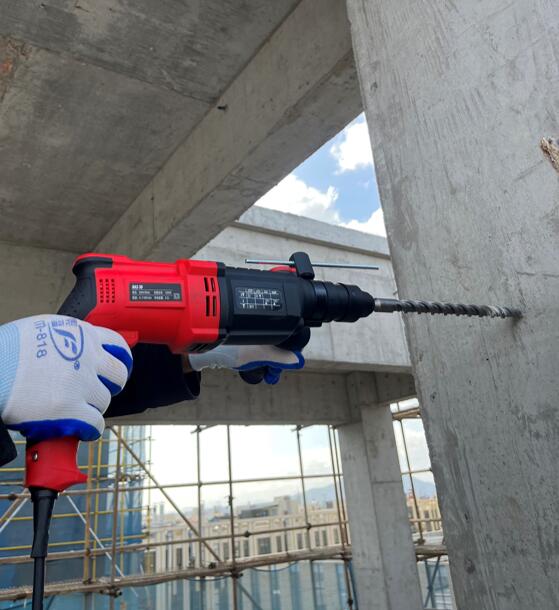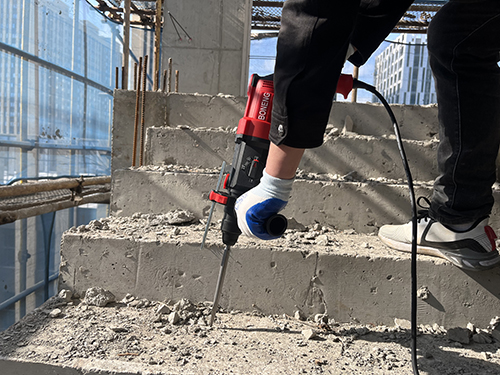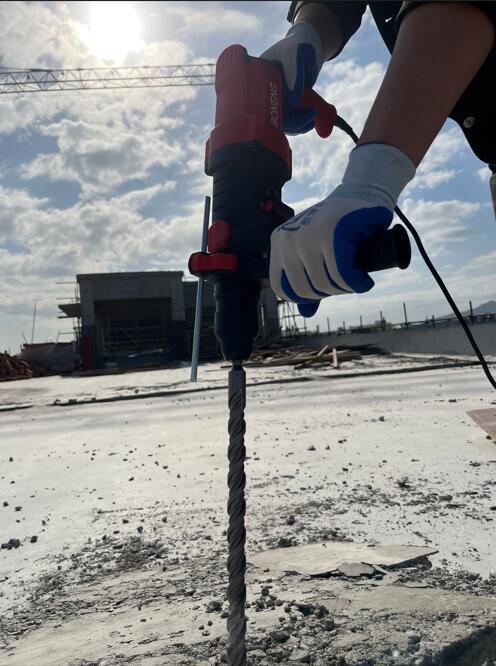Exploring the Differences Between Rotary Hammers and Chipping Hammers
2024-01-22 | Blogs
In the realm of power tools, rotary hammers and chipping hammers stand out as indispensable assets, each tailored for specific tasks within construction and masonry work. While they share the common goal of facilitating heavy-duty applications, understanding their differences is crucial for selecting the right tool for the job.

Rotary Hammer: Unleashing Versatility
1. Drilling Dynamics:
The primary function of a rotary hammer is drilling into tough materials like concrete, masonry, and stone. Equipped with a rotating drill bit, it employs a pulsating mechanism that combines rotary motion with a forward, hammering action. This dual-motion mechanism allows for efficient penetration through robust surfaces.

2. Chiseling Capabilities:
Rotary hammers often come with chiseling functions, making them versatile for tasks beyond drilling. This capability is especially useful for applications like chipping away excess concrete, tile removal, or sculpting surfaces. Users can switch between drilling and chiseling modes, expanding the tool's utility.

3. Application Range:
Ideal for tasks ranging from light-duty drilling to heavy-duty concrete demolition, rotary hammers are the go-to choice when versatility and power are paramount. Their adaptable nature caters to a wide spectrum of construction needs.

Chipping Hammer: Precision in Demolition
1. Focused Demolition:
Chipping hammers are specialized tools designed specifically for precision demolition work. With a chisel attachment, these hammers deliver concentrated blows, making them perfect for tasks like breaking up concrete, tile removal in confined spaces, or removing plaster.

2. Compact Design:
Chipping hammers are typically more compact and lighter than rotary hammers, allowing for better maneuverability in tight spaces. This makes them the preferred choice when the task requires a more targeted and controlled approach.
3. Limited Drilling Functions:
Unlike rotary hammers, chipping hammers are not primarily designed for drilling. While they may have a limited ability to drill into softer materials, their true strength lies in their precision and control during demolition applications.
Choosing the Right Tool for the Job
Consider the Task at Hand:
When selecting between a rotary hammer and a chipping hammer, consider the specific requirements of the task. If drilling into tough materials and occasional chiseling are on the agenda, a rotary hammer is the versatile choice. For precision demolition and focused chiseling, a chipping hammer is the more suitable option.
Evaluate Tool Features:
Assess the features of each tool, including power, modes of operation, and additional functions. Rotary hammers often come with multiple modes, while chipping hammers excel in delivering controlled blows.
Factor in Workspace Constraints:
If the job involves tight spaces or requires a more delicate touch, a chipping hammer's compact design might be the key. Rotary hammers, with their broader range of functions, are better suited for larger-scale projects.
In conclusion, understanding the distinctions between rotary hammers and chipping hammers is pivotal for making informed decisions on the construction site. By aligning the tool's capabilities with the task at hand, professionals can optimize efficiency and achieve superior results in their projects.
Related News
Choosing the Right Grease for Your Rotary Hammer
Rotary hammers are powerful tools designed for demanding applications in construction and masonry work. To keep these tools operating smoothly and efficiently, proper lubrication is crucial. One essential component for maintenance is the choice of grease.
What are safety rules when using a rotary hammer?
Using a rotary hammer involves handling a powerful tool that can be potentially hazardous if not used correctly. Adhering to safety rules is crucial to prevent accidents and ensure a safe working environment. Here are important safety rules when using a rotary hammer:
Unlocking the Power: What Are Rotary Hammer Drills Used For?
Rotary hammer drills have become indispensable tools in various industries and DIY projects, thanks to their versatile nature and robust capabilities. Let's delve into the details of what makes these tools so unique and the wide range of applications they serve.





